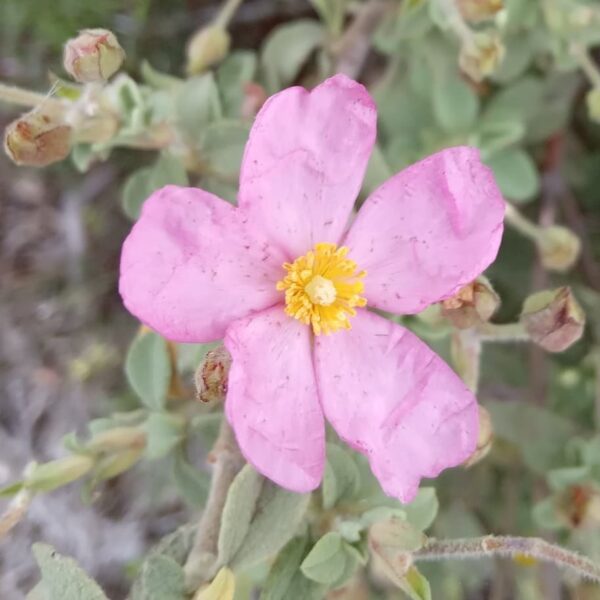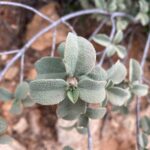Ξισταρκά, Λουβιδκιά, Λεούτιν, Λαδανιά, Κλαδίν, Κίστος ο μικρανθής
Etymology of Cistus parviflorus: The genus name "Cistus" derives from the Ancient Greek "κίστος" [kistos], which in turn comes from "κίσθος" [kisthos]. This is the ancient Greek name of this plant, of unknown etymology; the word is considered a loan from an older dialect or language. Latin "parvus+floris" means "short flower", which is a reference to the size of this species' flowers.
There are at least 8 Cistus kinds in Cyprus including species, subspecies and hybrids.
Cistus parviflorus is a very common plant in the Cypriot habitat. In Cyprus, it does not appear in the Troodos region and the Central and Central-Eastern parts of the island. Cistus parviflorus grows at an altitude of up to 900 metres. Its flowering period is between January and May. You can see it on dry uncultivated areas, open woodlands and roadsides.
How to identify Cistus parviflorus:
Although its flowers look similar to the ones of Cistus creticus subsp. creticus, parviflorus compared to creticus has non-sticky, harder, silver-green leaves. Additionally, it has up to six flowers on one edge, with a diameter of up to 3cm, compared to the 1-3 flowers of creticus on each end, with a diameter of up to 6cm.





